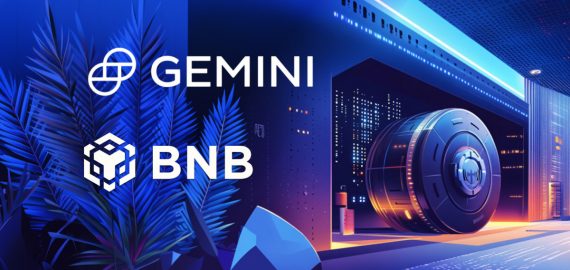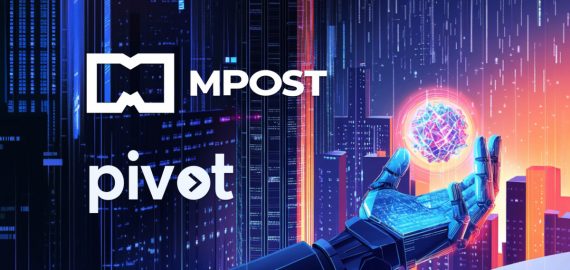Why Do Cryptos Have Value? Understanding Value-capturing Mechanisms of Digital Assets
This article is the third in our series on understanding the value of crypto tokens. The series aims to help the community navigate the ever-growing token landscape across various sectors, such as blockchains, L2s, Defi, GameFi, NFTs, memecoins, and more.
The previous installments included:
- Description of the coordinational value in decentralized networks and how token holders unlock this value via their utility functions;
- Introduction to the Origins of Value concept and Value function allowing to get an initial understanding what gives cryptocurrency value and the sources captured by a token.
Today, we present the more complex concept for understanding the value of tokens—the Value-Capturing mechanism – to answer one question: Why do cryptocurrencies have value?
Value-capturing mechanisms help us understand complex token models with different value-capturing and risk factors applied to token ownership.
Introduction to the Value-Capturing Mechanisms (VCMs)
We remind you that The Origin of Value (OoV) is a token function that allows a token holder to share the system’s value. Outside the L1 networks, the most common examples are Future Cashflow and Governance.
But what if the token simultaneously has several Origins of Value in its economic design?
The Value-capturing mechanism concept aims to describe the interactions of origins of value and their influence on each other, conveniently describing a multi-functional token model as a result.
A Value-Capturing Mechanism (VCM) is an economic mechanism composed of interacting origins of value, covering value-capturing and coordination requirements. This interaction is key to understanding what gives crypto value within different ecosystems.
Let’s explore a simple example: a typical token of a dePIN network. DePIN networks are infrastructure networks composed of physical infrastructure (nodes) that offer services to end-users, such as a decentralized VPN network:
- The end-users order the VPN service (connection) and pay for it;
- The node runners host dedicated servers, allowing users to establish a VPN connection, receive payment from end-users, and possibly receive additional incentives (rewards) from the network.
A robust network operation requires coordinating node runners (VPN providers) in a specific way. Node runners need to make a security deposit in DePIN network tokens that can be slashed in case of misbehavior—attacks on the network, failing service on purpose, or not maintaining the necessary uptime.
Thus, the token of a DePIN network offers to receive a value from OoV: Future Cashflow while simultaneously requiring exposure to slashing risks OoV: Risk Exposure and constantly providing a service to end-users OoV: Conditional Action.
The Value-Capturing mechanism for a proposed DePIN network token is a Work Token, containing a Future Cashflow as a positive part of the value function and Risk Exposure/Conditional Action as a negative one.
The Landscape of Value-Capturing Mechanisms (VCMs)
Since there are eight Origins of Value, the number of Value-Capturing Mechanisms that are combinations is much bigger:
- Theoretically, there are 2^8 – 1 = 255 possible mechanisms;
- Practically, the number is less since some combinations seem to be economically unstable;
- There are five trivial mechanisms containing only one Origin Of Value.
Below, we present trivial value-capturing mechanisms with some examples:
Note that a trivial Governance mechanism doesn’t exist since capturing value from the governance process requires active participation, which requires Conditional Action (participation in voting) from the token holders.
Examples of non-trivial Value-Capturing Mechanisms that have wide practical usage include the following ones:
Work Token
Future Cashflow, Risk Exposure, and Conditional Action. The successfully performed conditional action by the token holder – (Service provision) unlocks the Future Cashflow while being exposed to the slashing risks.
Examples: Livepeer, PowerPool.
Consensus
Future Cashflow, Risk Exposure, and Conditional Action; it is distinguished from the Work Token since it is dedicated to a specific type of Job – the consensus regarding the network state, which differs from Work-token-based networks and helps answer one question: Why does blockchain have value?
While Work token holders provide services to specific users, Consensus token holders execute one job for all blockchain users at once—attesting new blocks and cooperatively negotiating a correct blockchain state.
Examples: Ethereum, Polkadot, Cosmos, Gnosis Chain.
Discount Token
Future Cashflow and Conditional Action. The saved amount can be considered a cash flow when paying for services with a token. The size of the cash flow depends on the number of services used. The more services are used, the more money is saved due to discounts, corresponding to a larger cashflow.
These mechanisms shed light on what gives bitcoin value or gives blockchain value by offering real-world benefits and utility.
Examples: BNB (Binance coin), GT (Gate.io token), considering the corresponding CEX discounts on trading fees. Note that these assets also have other functions related to the blockchain ecosystems and launchpads developed by Binance and Gate.
Vote-escrowed governance
Future Cashflow, Governance, Risk Exposure, and Conditional Action. Curve pioneered vote-escrowed governance, which was adopted by dozens of other projects, including leading ones like Balancer, Frax, Aerodrome, Pendle, and many others (please visit https://www.defiwars.xyz/wars).
The idea of vote-escrowed governance comes down to:
- Enabling governance and protocol fee distribution only for token holders, locking their tokens in a special contract for a specified amount of time.
- Aligning long-term locks of token holders with bigger voting power, distributing protocol fees, and sometimes, additional incentives like a liquidity mining boost.
How it works: token holders lock their tokens into a special veContract. The lock duration starts from several days and can be as long as four years. In exchange for locking a portion of tokens for a specified time period, the token holder receives a governance right, protocol fee distribution, and additional monetary incentives such as a bigger liquidity mining yield (a boost).
Thus, a token has four sources of value: Future Cash Flow, Governance, Risk Exposure, and Conditional Action:
Note that Risk Exposure appears because long token locks mean that the tokens are non-transferable in the case of any event affecting the protocol, which means that the token holder is exposed to this type of risk for the entire lock period.
In vote-escrowed protocols, governance often provides additional monetary value to veToken holders via bribing incentives. Bribes are provided by third-party protocols aiming to boost rewards allocations (and therefore APY) to pools containing their assets.
What’s next?
So, why do cryptos have value? Value-capturing mechanisms provide a next-level understanding of tokens’ value-capturing capabilities, extending the Origins of Value concept and demonstrating their interrelationships within a token model.
The next topics will be Value-Capturing Implementation Patterns (VCIPs), which show the different code implementations of mechanisms, and the Periodic Table, which summarizes all existing mechanisms in an easy-to-use table.
Disclaimer
In line with the Trust Project guidelines, please note that the information provided on this page is not intended to be and should not be interpreted as legal, tax, investment, financial, or any other form of advice. It is important to only invest what you can afford to lose and to seek independent financial advice if you have any doubts. For further information, we suggest referring to the terms and conditions as well as the help and support pages provided by the issuer or advertiser. MetaversePost is committed to accurate, unbiased reporting, but market conditions are subject to change without notice.
About The Author
He's a seasoned writer known for crafting compelling narratives that engage audiences and drive brand growth. With a keen eye for detail and a passion for storytelling, Kenth excels at turning complex ideas into eye-catching marketing messages.
More articlesHe's a seasoned writer known for crafting compelling narratives that engage audiences and drive brand growth. With a keen eye for detail and a passion for storytelling, Kenth excels at turning complex ideas into eye-catching marketing messages.

















































